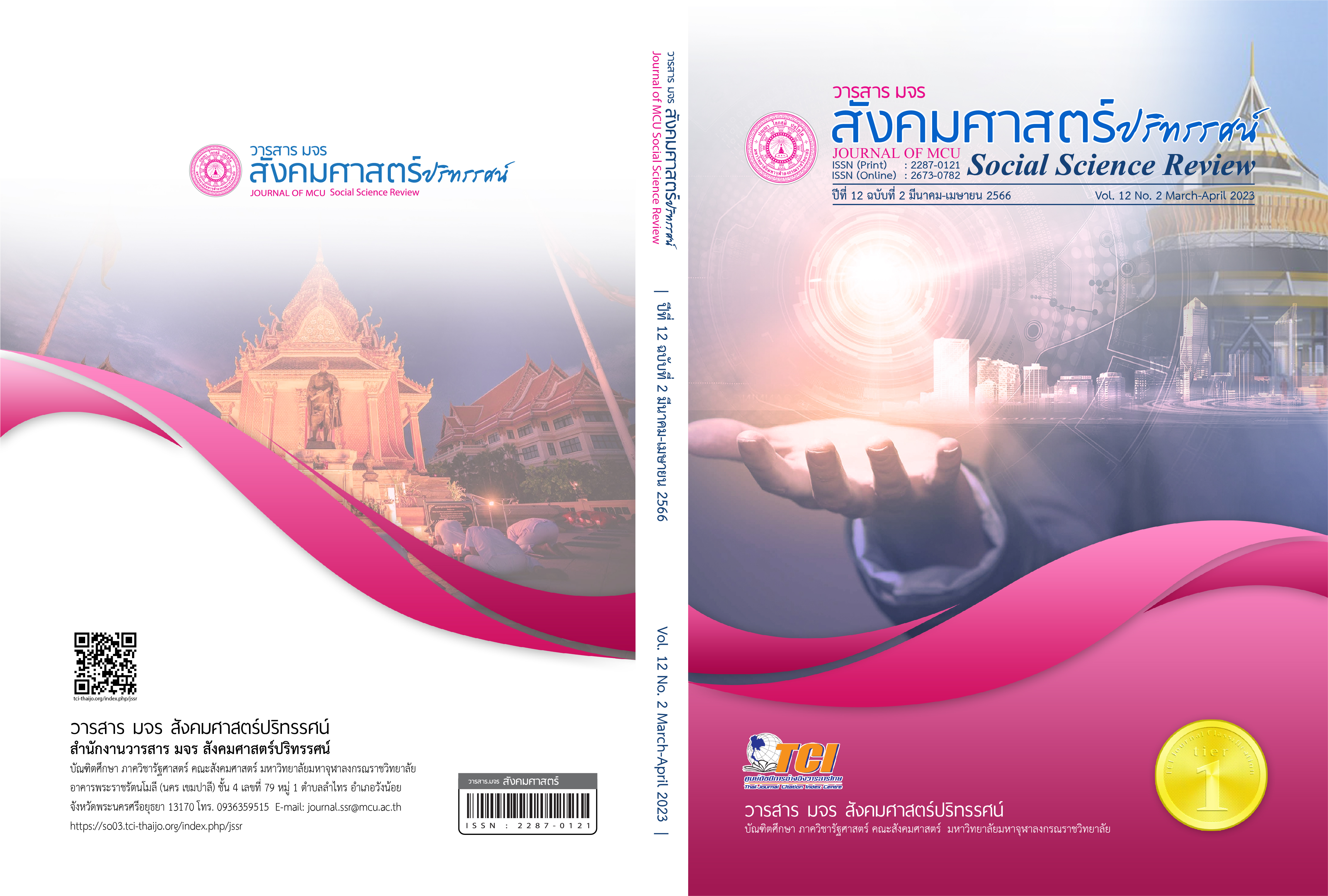เด็กและเยาวชนกับการสร้างชุมชนเข้มแข็ง
คำสำคัญ:
เด็กและเยาวชน, เครือข่าย, ชุมชนเข้มแข็งบทคัดย่อ
บทความนี้มีวัตถุประสงค์เพื่อศึกษารูปแบบเครือข่ายของเด็กและเยาวชนในการสร้างชุมชนเข้มแข็ง โดยใช้ทุนทางสังคมของชุมชนผ่านการทำวิจัยชุมชนของเด็กและเยาวชน ภายใต้การสนับสนุนของโครงการยุวสร้างเสริมปิดเทอมสร้างสรรค์ สำนักงานกองทุนสนับสนุนการสร้างเสริมสุขภาพ (สสส.) โดยมีเด็กและเยาวชนกว่า 98 ตำบลทั่วประเทศของเครือข่ายร่วมสร้างชุมชนท้องถิ่นน่าอยู่ พบแนวทาง 3 ประเด็นหลัก ได้แก่ 1) 6 มิติ การวิเคราะห์ทุนทางสังคมของเด็กและเยาวชน ประกอบด้วย (1) มิติประวัติศาสตร์ชุมชน (2) มิติสังคมและความเป็นอยู่ (3) มิติศาสนาและความเชื่อ (4) มิติเศรษฐกิจและอาชีพ (5) มิติวัฒนธรรมและประเพณี และ (6) มิติสุขภาพชุมชน 2) 4 บทบาทหลักในการร่วมสร้างชุมชนเข้มแข็งของเด็กและเยาวชน ประกอบด้วย (1) นักกิจกรรมและจัดกิจกรรมชุมชน (2) นักสืบสานวัฒนธรรม (3) นักสื่อสารชุมชน และ (4) นักวิจัยชุมชน และ 3) 3 แนวทางในการสร้างชุมชนเข้มแข็งของเด็กและเยาวชน ประกอบด้วย (1) การจัดตั้งเครือข่ายอย่างเป็นรูปธรรม (2) การจัดตั้งพื้นที่สร้างสรรค์ และ (3) การประชาสัมพันธ์ชุมชนโดยเด็กและเยาวชน
เอกสารอ้างอิง
ขนิษฐา นันทบุตร และคณะ. (2556). คู่มือการพัฒนาทักษะการวิจัยชุมชน ด้วยการวิจัยเชิงชาติพันธุ์วรรณนาแบบเร่งด่วน (Rapid Ethnographic Community Assessment Process: RECAP). กรุงเทพฯ: สำนักงานกองทุนสนับสนุนการสร้างเสริมสุขภาพ.
______. (2564). การพัฒนาข้อมูลระบบตำบล "แนวคิดและหลักการ". กรุงเทพฯ: สำนักงานกองทุนสนับสนุนการสร้างเสริมสุขภาพ.
โครงการยุวสร้างเสริมปิดเทอมสร้างสรรค์. (2563). แนวทางเครือข่ายยุววิจัยวัยจิ๋วในอนาคต. การประชุมสรุปปิดโครงการยุวสร้างเสริมปิดเทอมสร้างสรรค์. กรุงเทพฯ: สำนักงานกองทุนสนับสนุนการสร้างเสริมสุขภาพ.
นิสา รัตนดิลก ณ ภูเก็ต. (2563, 6 มิถุนายน). ผู้ช่วยผู้อำนวยการสำนักสนับสนุนสุขภาวะชุมชน, สำนักงานกองทุนสนับสนุนการสร้างเสริมสุขภาพ [บทสัมภาษณ์].
______. (2564). การพัฒนาตัวแบบการนำโครงการตำบลสุขภาวะของสำนักงานกองทุนสนับสนุนการสร้างเสริมสุขภาพไปปฏิบัติ (วิทยานิพนธ์ปริญญาดุษฎีบัณฑิต). กรุงเทพฯ: สถาบันบัณฑิตพัฒนบริหารศาสตร์.
ปิยะวัฒน์ เจริญศักดิ์. (2563, 30 พฤษภาคม). ผู้จัดการโครงการยุวสร้างเสริมปิดเทอมสร้างสรรค์. [บทสัมภาษณ์].
______. (2564). ความสุขและความผูกพันในการทำงานของพริตตี้ ในพื้นที่กรุงเทพมหานคร (วิทยานิพนธ์ปริญญามหาบัณฑิต). กรุงเทพฯ: สถาบันบัณฑิตพัฒนบริหารศาสตร์.
สมบูรณ์ ธรรมลังกา. (2556). รูปแบบการเสริมสร้างความเข้มแข็งของชุมชนโดยใช้ภูมิปัญญาท้องถิ่นเป็นฐานในจังหวัดเชียงราย. วารสารศึกษาศาสตร์ มหาวิทยาลัยนเรศวร, 15(2), 58-66.
สำนักงานกองทุนสนับสนุนการสร้างเสริมสุขภาพ. (2563). การประชุมแลกเปลี่ยนเรื่องฉันกับชุมชน. ประชุมระดมสมองยุววิจัยวัยจิ๋วร่วมสร้างชุมชนท้องถิ่นน่าอยู่. กรุงเทพฯ: สำนักงานกองทุนสนับสนุนการสร้างเสริมสุขภาพ.
Black, A. & Hughes, P. (2010). The Identification and Analysis of Indicators of Community Strength and Outcomes. FaHCSIA Occasional Paper No. 3, From https://ssrn.com/abstract=1729048
Khanitta Nuntaboot et al. (2018). Community Research using Rapid Ethnographic Community Assessment Process. Bangkok: Thai Health Promotion Foundation, Healthy Community Strengthening Section.
ดาวน์โหลด
เผยแพร่แล้ว
รูปแบบการอ้างอิง
ฉบับ
ประเภทบทความ
สัญญาอนุญาต
ลิขสิทธิ์ (c) 2023 วารสาร มจร สังคมศาสตร์ปริทรรศน์

อนุญาตภายใต้เงื่อนไข Creative Commons Attribution-NonCommercial-NoDerivatives 4.0 International License.
เพื่อให้เป็นไปตามกฎหมายลิขสิทธิ์ ผู้นิพนธ์ทุกท่านต้องลงลายมือชื่อในแบบฟอร์มใบมอบลิขสิทธิ์บทความให้แก่วารสารฯ พร้อมกับบทความต้นฉบับที่ได้แก้ไขครั้งสุดท้าย นอกจากนี้ ผู้นิพนธ์ทุกท่านต้องยืนยันว่าบทความต้นฉบับที่ส่งมาตีพิมพ์นั้น ได้ส่งมาตีพิมพ์เฉพาะในวารสาร มจร สังคมศาสตร์ปริทรรศน์ เพียงแห่งเดียวเท่านั้น หากมีการใช้ภาพหรือตารางหรือเนื้อหาอื่นๆ ของผู้นิพนธ์อื่นที่ปรากฏในสิ่งตีพิมพ์อื่นมาแล้ว ผู้นิพนธ์ต้องขออนุญาตเจ้าของลิขสิทธิ์ก่อน พร้อมทั้งแสดงหนังสือที่ได้รับการยินยอมต่อบรรณาธิการ ก่อนที่บทความจะได้รับการตีพิมพ์ หากไม่เป็นไปตามข้อกำหนดเบื้องต้น ทางวารสารจะถอดบทความของท่านออกโดยไม่มีข้อยกเว้นใดๆ ทั้งสิ้น





